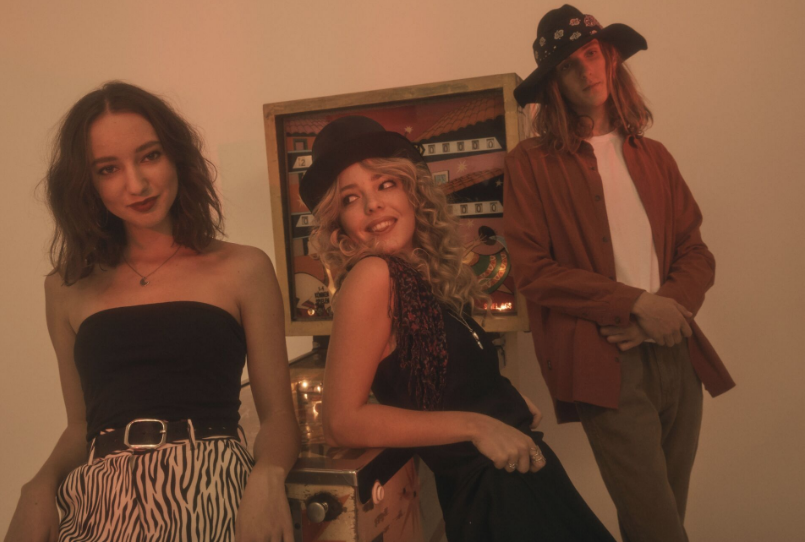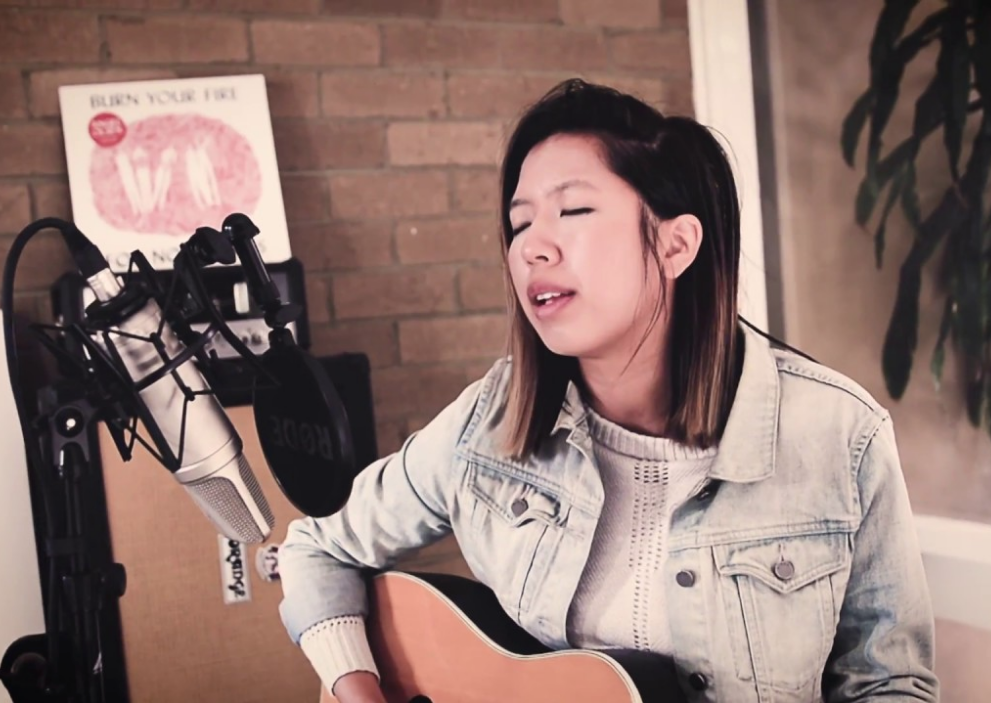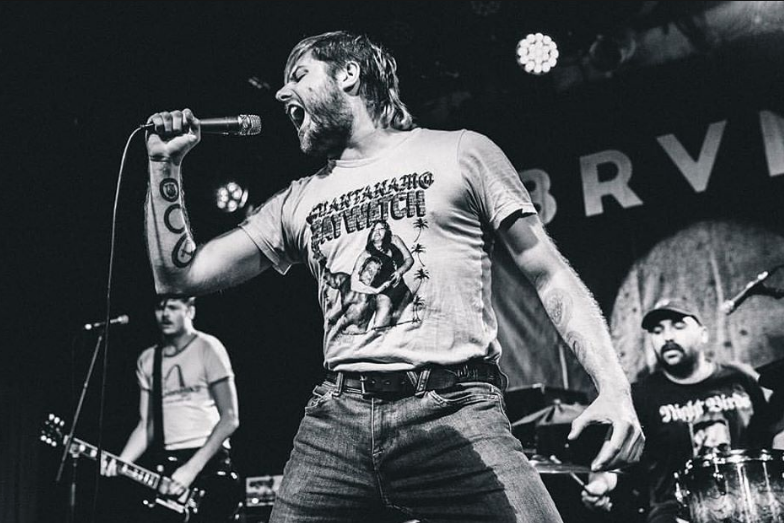Inside the music industry’s livestreaming bubble [part one]
![Inside the music industry’s livestreaming bubble [part one]](https://images.thebrag.com/cdn-cgi/image/fit=cover,width=1200,height=800,format=auto/https://images-r2-1.thebrag.com/tmn/uploads/Live-Stream-concert.png)
The livestream numbers that come from a captive audience, the most significant being 270 million for One World: Together At Home, are being reflected in Australia.
Timmy Trumpet’s one-hour stream from his Sydney apartment drew about 1.4 million views on social media from some 60 countries.
A myriad of live streaming festivals and concerts are being set up to continue musicians’ engagement with the public.
“The feedback we’re getting from artists is they’re grateful for the opportunity to rehearse and get ready for a gig – otherwise they wouldn’t have a focus for their week,” says Melbourne artist, venue booker and festival programmer, Emily Ulman.
“They get to dress up their living room or bedroom or where ever they’re streaming from. During the show, they get chatter and feedback from viewers.”
Ulman is one of the organisers of free livestreaming festival Isol-Aid, which started as a one-off to raise money for Support Act through viewer donations.
After it raised $12,000 the first time, it continued to its eighth instalment, bringing a total of artists showcased to 449.
Over the past weeks, up to 3,000 watched Julia Jacklin and Stella Donnelly, while numbers for Missy Higgins, John Butler and Vanessa Amorosi were even higher.
Livestreaming, explains Ulman, has a lot of positives. It makes us consume music differently, and important for music fans who have issues with physical access, crowds and loud noises.
The structure of free streaming events is also essential to putting the spotlight on emerging acts.
After their 20-minute set, each act tag-teams the next, with the idea of opening new audiences.
“Acts who perform see a boost in upwards of 400 new followers to their socials,” said Ulman.
“There are no headliners on the bill playing last. You can see one of the biggest acts next to an artist who’s only played a handful of gigs.”
Such is the rush globally to livestreaming app Twitch that consumption in its music and performing arts category jumped from 92,000 hours on March 8 to 574,000 hours on March 22.
The number of livestream events added to the live event discovery website Bandsintown between April 22-28 rose to a weekly total of 3,109, it reported on May 1.
The site identified two trends from tracking 8,000 streams from March 25 across Facebook, Instagram, YouTube, Twitch, StageIt and Null.
Almost 77% of livestreams are by smaller acts, with 10,000 or fewer Bandsintown trackers and a further 20% are by artists with 10,000-249,000 trackers.
Most livestreaming also acts take place mid-week, with very few on the weekends.
The second instalment of Nielsen Music/MRC Data’s survey series reported that consumers are mostly listening to familiar music but some want to find new songs.
84% listen to what they normally do, 62% are rediscovering music not tuned in to for some time, and 62% try out new music, according to the study.
The Buckleys

A successful example of a young Australian act breaking through via livestreaming is Byron Bay teen “hippie country” band The Buckleys, who were one of 2019’s breakthroughs.
Their plan was to drop their first international single ‘Money’ through Petrol/Universal Music and follow up with the release of their debut album Breathe and world tour dates.
When the tour industry shut down, Petrol founder Chris Murphy, also INXS’s svengali, turned to top US-based executives of the world’s biggest promoter Live Nation.
“We came up with the world’s first-ever virtual tour,” Murphy says.
Through Live Nation’s new Live From Home platform and other outlets, the 18 shows covered North America, South America, Europe, The Middle East and Asia, winding up on April 30 in Australia and New Zealand.
In six days, the band had to come up with four different sets, and rehearse at least ten new covers, including The Beatles’ ‘Revolution’.
With travel restrictions preventing their rhythm section from joining them at their home for the broadcasts, Sarah Buckley learned to play bass, and they roped in their 12-year old brother Dylan to take over drummer duties.
The North American leg of the tour alone drew 370,000 viewers – an impressive figure for an act virtually unknown in that market.
Murphy explodes: “Do you know how many years of physical touring we would have had to have done to reach numbers like that?”
Such figures resulted in The Buckleys landing on major streaming playlists and set them up before international Live Nation and Universal executives as an act-with-legs worth supporting.
Last week early estimates suggested one million viewers by the end of the tour. However, on May 1, Live Nation upgraded the total figure to four million.
Nat Vazer

Like many Australian musicians, singer-songwriter Nat Vazer was initially sceptical about livestreaming.
“To be honest, I probably wouldn’t have considered livestreaming before the pandemic,” admits the indie-rock performer who started gigging around Melbourne in mid-2018.
There were so many great physical venues to preferably play in, she preferred to eyeball the audience, and she was apprehensive about the sound quality and how many people she’d draw.
But she had a problem: her debut album Is This Offensive And Loud was due for release on May 29 through Melbourne indie Hotel Motel Records, and she obviously needed to set it up.
Her first three livestreams not only brought in numbers only reached after months on the road, but she began to get fan mail from abroad.
The first was on Imagination TV, run by the non-profit Aime Mentoring to engage school students in the US and Africa.
Vazer appeared with musicians and visual artists addressing how creativity worked and how inspiration was essential to the world. She won herself 150 new fans.
Another 30 came on board during a mid-week lunchtime set for Reclink which supports disadvantaged people via sports and the arts.
Her Isol-Aid appearance, as part of the Record Store Day substitute, drew the largest response.
“I went into Rocksteady Records in the CBD and played in there, to 250 streams. There were 900 in total after that. That blew my mind. “I realised livestreams were a gateway to the global market.”
The artist says Livestreams may not give her the thrill of feeding off an audience’s energy but they provide ways via tailored shows to connect.
Comedy routines, storytelling and pasta cooking are just three she’s tentatively tossed around.
“If I did that at the Corner Hotel they’d want their money back. But with livestreaming anything is possible without firmly established expectations.
“People are on their couches at home sipping wine, they just want to be entertained.”
But Vazer warns artists to be wary of agreeing to livestream gigs for no fee in lieu of the exposure.
“That’s a classic line that artists hear on the live circuit. Livestreaming has been a fantastic experience for me personally, and it’s opened a lot of opportunities for artists.
“But it’s important to make sure artists are protected at this time and not ripped off from another revenue stream. We don’t want unpaid gigs to become a festival norm.”
Private Function

Photo by Lauren Connelly.
Livestreaming seems the perfect avenue for the whacky absurd humour and wild onstage antics of Melbourne rock band Private Function.
Think a member setting himself on fire; turning a beer garden into a carnival, pin the tail on the donkey and a hot dog eating contests and cutting into the foldback with a chainsaw.
Little wonder they keep selling out their shows and are currently negotiating a record deal.
Relates Cara Williams, whose company Slow Clap manages the outfit, “When we were floating the idea of the Isol-Aid set, there was never a conversation about them playing a typical set – it just doesn’t suit their brand.
“Their fans expect an element of crazy in everything they do, and entertainment is ultimately the core of the band, so there was never a doubt they were going to do something outside the box.”
This included buying a transformer to run through a film camera to act as a computer, members scoffing hot red chillis before the performance to inevitable physical reactions, a set of all-covers from Elvis Presley to 3 Doors Down and their bass player dressed as Kermit The Frog playing the banjo on ‘Rainbow Connection’.
The band got three times the views they normally would, attracted 150 new followers and sold 20 merch items during the 20-minute set.
Private Function who nominate Australian comic character Norman Gunston over any musician as their greatest inspiration, had earlier live-streamed a late-night variety show format, devised by drummer / in-house director Aidan McDonald.
“But it was copyright-struck and taken down halfway through,” imparts frontman Chris Penney.
“But they’re fun and visually creative things to do, and we’ve got ideas for a lot more of them. We want to livestream a weekly variety show.”
Private Function interacts closely with their social media followers – 5,000 on Instagram and 5,000 on Facebook – and Penney says they help come up with the OTT ideas.
“Our fans expect a certain level of creativity. They push us to do things differently from what normal people would do.
“Which is great because it pushes things forward with different ideas coming …We’re about concept over quality (laughs).”
Private Function’s programming ABC-TV’s Rage this year came after they punk’d their socials.
Last year when Penney accompanied band buddies Screaming Females to the Rage studios for their segment, he took a photo of himself on the show’s famous red sofa.
It was them posted on socials with a fibbing note which claimed it was taken at Private Function’s Rage show, and which the ABC had then decided to scrap.
Fans bombarded the network with demands that the non-existence episode be aired.
When Private Function finally got to program the show, they deliberately chose the worst songs they could find. This led to another outburst of emails from Rage viewers calling them a disgrace.
Meantime more young acts around the country are preparing for interesting livestreams.
One is frantically learning 350 covers, another is sewing his-and-his silk pyjamas to perform in, and another is frantically transcribing Nick Cave lyrics as part of a solemn poetry reading.






























